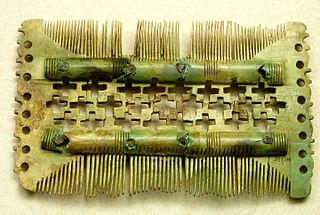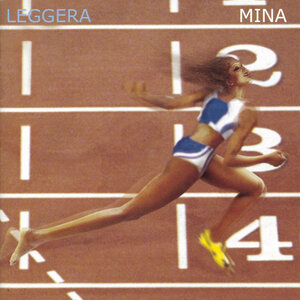Varini can refer to:
- The Warini, a barbarian tribe of Late Antiquity
- Variņi parish, a parish in Latvia
- Felice Varini, Swiss artist
Varini can refer to:
German(s) may refer to:

The Thuringii, Toringi or Teuriochaimai were an early Germanic people that appeared during the late Migration Period in the Harz Mountains of central Germania, a region still known today as Thuringia. It became a kingdom, which came into conflict with the Merovingian Franks, and it later came under their influence and Frankish control. The name is still used for one of modern Germany's federal states (Bundesländer).

The Varini, Warni or Warini were one or more Germanic peoples who originally lived in what is now northeastern Germany, near the Baltic sea.
The Reudigni were one of the Nerthus-worshipping Germanic tribes mentioned by Tacitus in Germania. Schütte suggests that the name should be read Rendingi or Randingi and then the name would be the same as the Rondings of Widsith. They have otherwise been lost to history, but they may have lived in Denmark prior to the arrival of the Daner recorded by Jordanes. Schütte suggests that their name lives on in the names Randers and Randers Fjord, Denmark.
(Original Latin) "Reudigni deinde et Aviones et Anglii et Varini et Eudoses et Suardones et Nuithones fluminibus aut silvis muniuntur. Nec quicquam notabile in singulis, nisi quod in commune Nerthum, id est Terram matrem, colunt eamque intervenire rebus hominum, invehi populis arbitrantur. ..." --Tacitus, Germania, 40.
(English translation) "There follow in order the Reudignians, and Aviones, and Angles, and Varinians, and Eudoses, and Suardones and Nuithones; all defended by rivers or forests. Nor in one of these nations does aught remarkable occur, only that they universally join in the worship of Herthum (Nerthus); that is to say, the Mother Earth."--Tacitus, Germania, 40, translated 1877 by Church and Brodribb.
The Aviones or Auiones were one of the Nerthus-worshipping Germanic tribes of the 1st century mentioned by Tacitus in Germania, and they lived either in the southern Jutland Peninsula, or on Öland. They are mentioned in Widsith as Eowan.
The Suarines or Suardones were one of the Nerthus-worshipping Germanic tribes mentioned by Tacitus in Germania. They have otherwise been lost to history, but Schütte suggests that their name lives on in the name of the town Schwerin.
The Nuithones were one of the Nerthus-worshipping Germanic tribes mentioned by Tacitus in Germania. Schütte remarks that the name is probably corrupt and suggests that the correct forms were Teutones or Euthiones (Jutes).
(Original Latin) "Reudigni deinde et Aviones et Anglii et Varini et Eudoses et Suardones et Nuithones fluminibus aut silvis muniuntur. Nec quicquam notabile in singulis, nisi quod in commune Nerthum, id est Terram matrem, colunt eamque intervenire rebus hominum, invehi populis arbitrantur. ..." --Tacitus, Germania, 40.
(English translation) "There follow in order the Reudignians, and Aviones, and Angles, and Varinians, and Eudoses, and Suardones and Nuithones; all defended by rivers or forests. Nor in one of these nations does aught remarkable occur, only that they universally join in the worship of Herthum (Nerthus); that is to say, the Mother Earth."--Tacitus, Germania, 40, translated 1877 by Church and Brodribb.
The Avarpi or Auarpoi or Avarni were Germanic tribe attested in Ptolemy's Geography. The attested Greek is Auarpoi. Avarpi is a scholarly transliteration into Latin, with some using Avarni on the assumption that the name refers to the Varni of Mecklenburg. However, Ptolemy uses Farodeinoi for Varini and clearly says that the Auarpoi are next to the Teutonikai and between the Sueboi and the Farodeinoi. This location is not precise, but is somewhere in the Pommern/Propommern region.

Felice Varini is a Paris-based, Swiss artist who was nominated for the 2000/2001 Marcel Duchamp Prize. Mostly known for his geometric perspective-localized paintings in rooms and other spaces, using projector-stencil techniques, according to mathematics professor and art critic Joël Koskas, "A work of Varini is an anti-Mona Lisa."

On 1 July 2009 the 26 districts of Latvia, introduced in 1949 by the Soviet occupation authorities to supersede counties, were divided into 77 cities, 10 amalgamated municipalities, 24 rural territories and 475 parishes.

Mina Celentano is a duet album by Italy's chart-topping artists Mina and Adriano Celentano, issued in 1998. Lucio Battisti was initially attached to the project but he eventually dropped out.

Olio is a studio album by Italian singer Mina, released on 15 April 1999 by PDU and distributed by RTI Music.

Leggera is a studio album by Italian singer Mina, released on 17 October 1997 by PDU.

Variņi Parish is an administrative territorial entity of Smiltene Municipality, Latvia. Prior to the 2009 administrative reforms it was part of Valka District.

Smiltene Municipality is a municipality in Vidzeme, Latvia. The municipality was formed in 2009 by merging the town of Smiltene with the rural parishes of Bilska, Blome, Branti, Grundzāle, Launkalne, Palsmane, Smiltene and Variņi. During the 2021 Latvian administrative reform, the previous municipality was merged with Ape Municipality and Rauna Municipality.

The Badalisc is a mythical creature of the Val Camonica, Italy, in the southern central Alps. The Badalisc is represented today as a creature with a big head covered with a goat skin, two small horns, a huge mouth and glowing eyes.

You Can't Fool Antoinette is a 1936 French comedy film directed by Paul Madeux and starring Armand Bernard, Paul Pauley and Simone Renant. The film's sets were designed by the art directors Henri Ménessier and René Renoux.
The 2021 Liga Profesional de Primera División season, also known as the Campeonato Uruguayo de Primera División 2021, was the 118th season of the Uruguayan Primera División, Uruguay's top-flight football league, and the 91st in which it is professional. The season, named "Dr. Tabaré Vázquez" after the late former President of Uruguay and chairman of Progreso from 1979 to 1989, started on 15 May and ended on 7 December 2021, with the starting date having been pushed back from early 2021 due to the late conclusion of the previous season owing to the COVID-19 pandemic.
Martín Varini Dizioli is a Uruguayan football manager and former player who played as a central defender. He is the current manager of Uruguayan club Defensor Sporting.